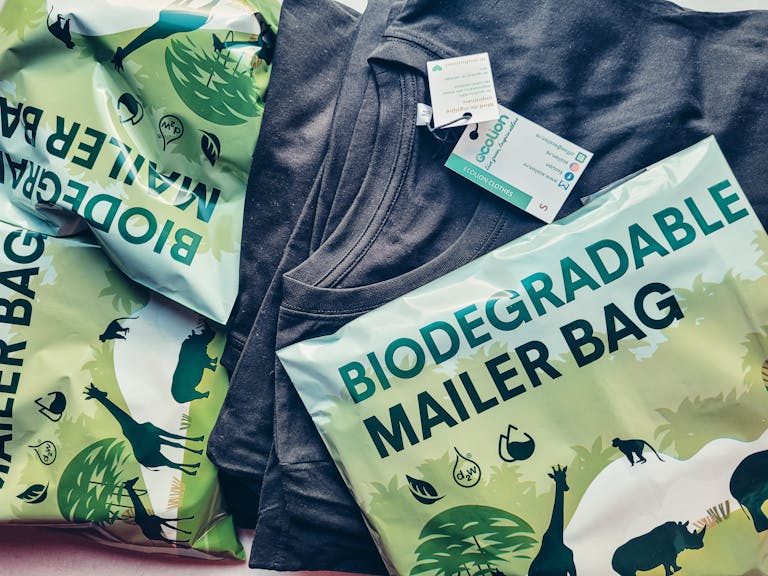Our planet is changing, and people are taking notice. As climate change concerns grow, we’re seeing a remarkable shift in how businesses operate and consumers shop. Companies that prioritize eco-friendly practices are finding themselves at an advantage as more shoppers make purchasing decisions based on environmental impact rather than just price or convenience.
This cultural transformation isn’t just a passing trend. Research shows that consumers are increasingly willing to choose sustainable products even when they come at a premium. The rapidly increasing demand for eco-friendly products is pushing retailers to rethink their entire supply chains and product offerings, creating a virtuous cycle of sustainability.
Technology is emerging as a powerful ally in this green revolution. From apps that track carbon footprints to innovative recycling solutions, tech advancements are making it easier for both businesses and individuals to embrace sustainable supply chain practices. These tools not only help reduce environmental impact but also create transparency that builds consumer trust and loyalty.
Key Takeaways
- Climate change awareness is fundamentally altering consumer behaviour, with more people actively seeking sustainable options in their everyday purchases.
- Businesses responding to this shift with genuine eco-friendly practices are gaining competitive advantages and stronger customer relationships.
- Technological innovations are making sustainable practices more accessible and effective for both companies and consumers alike.
Raising Awareness: The Impact of Climate Change on Consumer Choices

Climate change awareness is reshaping how people shop and what they value. This growing consciousness is pushing brands to adapt their offerings and prompting consumers to reconsider their priorities.
Understanding Climate Change and Environmental Responsibility
Today’s consumers are increasingly prioritizing environmental protection in their purchasing decisions. This shift comes from a deeper understanding of how individual choices affect our planet.
People are becoming more informed about carbon emissions and their environmental footprint. This knowledge is driving them to seek out sustainable goods that align with their values.
Environmental consciousness isn’t just a trend—it’s becoming a way of life. Many shoppers now research a company’s sustainability practices before making purchases.
Environmental concerns are increasingly shaping the global economy. Consumers show growing willingness to accept eco-friendly options as they embrace environmental stewardship.
The Role of Technology in Advancing Sustainable Practices
Technology is playing a crucial role in making sustainable choices more accessible. Mobile apps now help shoppers check products’ environmental impact with a simple scan.
Renewable energy advancements have made eco-friendly products more affordable and efficient. This accessibility has encouraged more widespread adoption of sustainable consumption habits.
Digital platforms connect environmentally conscious consumers with brands that share their values. These connections foster communities dedicated to systemic change.
Businesses are engaging with various eco-friendly tools to meet evolving expectations of consumers who prioritise sustainability. Smart technologies enable companies to create more transparent supply chains.
Airline companies are embracing green marketing to promote eco-friendly travel options as sustainability and climate change awareness grows.
Consumer Trends and Sustainable Market Shifts
Today’s marketplace reflects a significant shift in consumer behaviour as climate change awareness grows. People are making different choices based on environmental impact and seeking ways to align their purchases with their values.
From Awareness to Action: Changes in Purchasing Behaviour
Consumer demand for eco-friendly products has grown dramatically in recent years. What was once a niche market has become mainstream, with shoppers actively seeking products that minimise environmental harm.
Studies show that modern consumers are increasingly willing to pay more for sustainable products. This shift isn’t just about personal preferences—it represents a deeper change in consumption patterns. People are considering the entire lifecycle of products before purchasing.
Sustainable packaging has become a key factor in purchasing decisions. Consumers now examine:
- Recyclability of materials
- Reduced plastic usage
- Biodegradable alternatives
Purchasing patterns reveal that consumers now actively research brands’ environmental practices before committing to purchases, even using mobile apps to verify sustainability claims while shopping.
Ethical Considerations and Corporate Accountability
Corporate social responsibility has evolved from a marketing strategy to a business necessity. Companies must now demonstrate genuine commitment to environmental and social causes or risk losing customers.
Transparency has become non-negotiable. Consumers expect clear information about:
- Product origins
- Manufacturing conditions
- Environmental impact
- Supply chain ethics
The rise of greenwashing concerns has made shoppers more sceptical of vague sustainability claims. They now demand verifiable proof of environmental practices rather than accepting marketing promises.
Locally produced goods have gained popularity as consumers recognise the carbon footprint associated with global shipping. This shift supports local economies while addressing climate concerns.
Fair trade and human rights considerations have become integral to purchasing decisions, with consumers actively avoiding brands associated with poor labour practices.
Emerging Trends: Eco-Friendly Products and Circular Economy
The circular economy concept is transforming how products are designed, manufactured and consumed. Brands embracing this model focus on eliminating waste through recycling, upcycling and product lifecycle extension.
Innovative eco-friendly alternatives are emerging across all sectors:
Food & Beverage
- Compostable packaging
- Plant-based alternatives
- Water-saving production
Fashion
- Recycled fabrics
- Biodegradable materials
- Rental services
Home Goods
- Energy-efficient appliances
- Natural cleaning products
- Refillable systems
Biodiversity protection has emerged as a growing consumer concern, with shoppers increasingly supporting brands that actively protect natural habitats and reduce deforestation.
Technology is playing a vital role in making sustainable choices more accessible, with apps that track environmental impact and platforms that connect consumers with eco-friendly options becoming increasingly popular.
Frequently Asked Questions
The growing climate consciousness has transformed how people shop and make everyday choices. Eco-friendly options have moved from niche to mainstream as both technology and awareness evolve.
How are consumer buying habits evolving with regard to eco-friendly products?
Consumers are increasingly making sustainability a key factor in their purchasing decisions. Research shows that people are now more likely to select eco-friendly alternatives when given the choice.
The demand for green products continues to rise steadily each year. Many shoppers now check for environmental certifications and sustainability claims before making purchases.
Product packaging has become particularly important, with studies showing green packaging increases consumer willingness to choose eco-friendly options.
What statistics reveal about the willingness of consumers to pay a premium for sustainability?
Recent surveys indicate that 60-70% of consumers are willing to pay at least 5% more for products with proven environmental benefits. This premium tolerance varies significantly by product category and demographic group.
Younger generations, particularly Millennials and Gen Z, demonstrate the highest willingness to pay extra for sustainable goods. Studies show they’ll spend up to 15% more for products aligned with their environmental values.
The premium consumers will pay is highest when the eco-friendly benefits directly affect personal health or provide tangible cost savings over time.
In what ways are people integrating eco-friendly practices into their everyday lives?
Many households have adopted reusable alternatives to single-use items such as shopping bags, water bottles, and food containers. These simple swaps have become second nature for environmentally conscious consumers.
Transportation choices are changing, with more people selecting eco-friendly travel options when available. This includes carpooling, public transport, cycling, and increasingly, electric vehicles.
Home energy usage is another area of focus, with smart thermostats, LED lighting, and energy-efficient appliances becoming standard in many households rather than luxury upgrades.
To what extent does environmental consciousness influence consumer behaviour in the UK?
Environmental awareness strongly influences UK shopping habits, with 85% of British consumers reporting they’ve become more eco-conscious in their purchasing decisions over the past five years.
The UK has seen particularly strong growth in sustainable fashion and locally-sourced food, with “food miles” becoming an important consideration for many shoppers.
British retailers have responded by making sustainability a priority, with major supermarkets and department stores expanding their eco-friendly ranges significantly.
How are technological advancements supporting sustainable consumer choices?
Mobile apps that track carbon footprints or verify sustainability claims have empowered consumers to make more informed choices. These tools provide transparency that was previously unavailable.
Smart home technology allows for more efficient energy usage, with automated systems optimising heating, cooling and electricity consumption based on actual needs rather than wasteful habits.
Online marketplaces dedicated to second-hand and refurbished goods have made circular economy practices more accessible to everyday consumers, extending product lifecycles.
What measures can individuals take to become more eco-conscious shoppers?
Learning to identify genuine eco-friendly products is essential, as not all products labelled as “eco-friendly” deliver on their promises. Look for recognised certifications rather than vague claims.
Adopting a “less is more” approach by buying fewer, higher-quality items that last longer can significantly reduce environmental impact while often saving money over time.
Being more mindful about disposal and recycling completes the eco-conscious shopping cycle. Understanding local recycling guidelines and properly disposing of items makes a substantial difference.
As an Amazon Associate, I earn from qualifying purchases.





